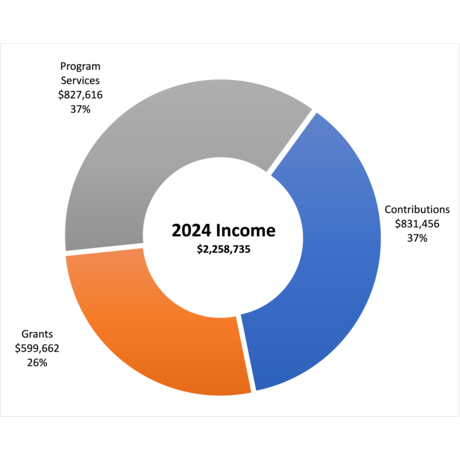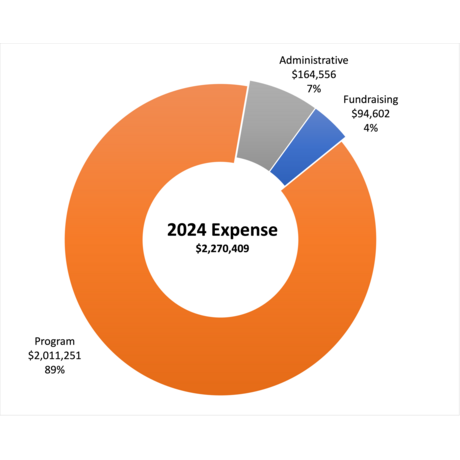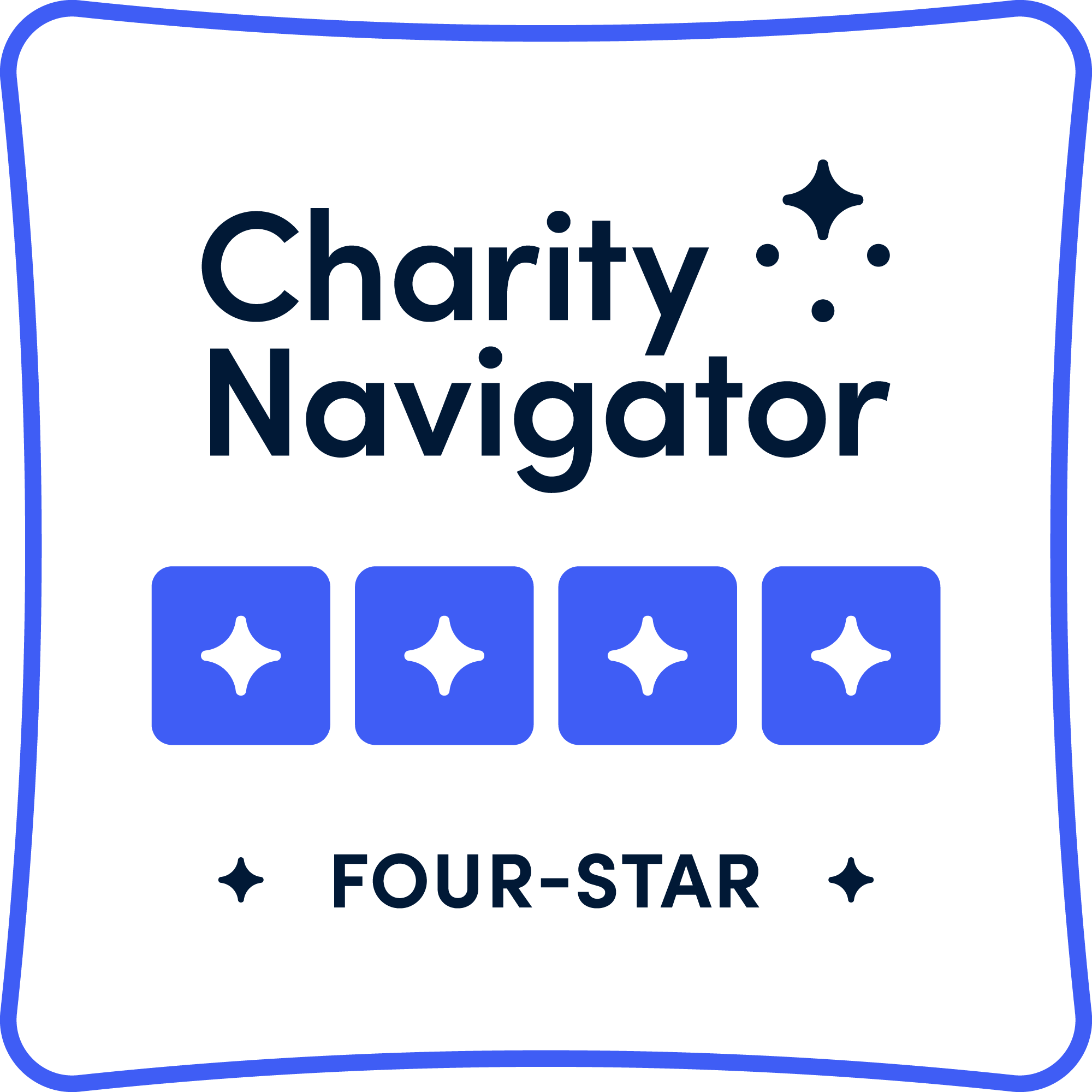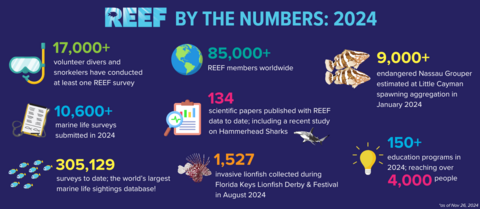2024 Financials
REEF continues to experience a strong financial position. Our programs and reach are growing. REEF continued to allocate well over 80% of our revenue to program-related expenses. Thanks to the generosity of our members, annual contribution income continues to grow. We also have secured several research grants to support our Conservation Science projects, Explorers Education programs, and Oceans for All initiatives. In addition to the income shown here, REEF's FY24 990 filing also includes $2.8 million in restricted funds revenue for property development at the REEF Campus in Key Largo, FL with the opening of the Ocean Exploration Center in June 2024.
Click on the graphs to view larger.
Almost 90% of our revenue is spent directly on REEF's mission-oriented ocean conservation and education programs.
*REEF's FY24 990 filing also includes $2,805,372 in capital funding for the new Ocean Exploration Center on the REEF Campus in Key Largo, FL.
You Can Trust REEF
REEF has a proven track record of achieving our mission and making a difference for our oceans. REEF’s focus is to develop strong programming to engage and inspire the public through citizen science, education, and partnering with the scientific community to achieve a healthier ocean.
REEF has an exceptional ‘Give with Confidence’ rating and Four Stars on Charity Navigator, joining the less than 1% of charities with a perfect score for fulfilling our mission in a fiscally-responsible way while adhering to good governance and other best practices. In addition, REEF has been awarded the Platinum Seal of Transparency by GuideStar. These ratings mean your donation goes directly to making a difference for our oceans. REEF also has been consistently recognized as a Top-Rated Non-profit by GreatNonprofits each year and is an approved nonprofit partner in the1% for the Planet network.
Principles and Practices for Nonprofit Excellence
As a charitable nonprofit, REEF follows best practices reflecting accountability and transparency, prudent fiduciary oversight, legal, ethical, and responsible fundraising, and effective governance, as outlined by the National Council of Nonprofits. This includes policies that cover conflicts of interest, accounting activities, Board giving and governance, financial reporting and transparency, and demonstrating REEF's outcomes and effectiveness.
Board Transparency and Governance
The REEF Board of Trustees provides strategic leadership, fiscal oversight, and policy guidance for the organization. The Board meets quarterly to review progress toward REEF’s mission and to make key decisions regarding programs, finances, and long-term planning. Board meetings are closed sessions for Directors to allow candid discussion of organizational and confidential matters. While meeting dates are not publicly posted, REEF is committed to transparency in its governance and financial practices. Stakeholders, members, and supporters are welcome to contact REEF’s Executive Director with questions about governance, or to learn how to engage through committees, volunteer opportunities, or annual member events. REEF publishes annual audited financial statements, IRS Form 990 filings, and an Annual Impact Report summarizing the organization’s impact and major actions approved by the Board.
Indirect Cost Limitations
REEF occasionally provides funding through partners, including academic institutions, government agencies, and NGOs, to accomplish aspects of our work. In order to maximize resources, the indirect cost rates for funding cannot exceed 10% for US academic institutions and 15% for NGOs and other institutions. The requirements and activities of each project will be considered when determining direct and indirect costs.





